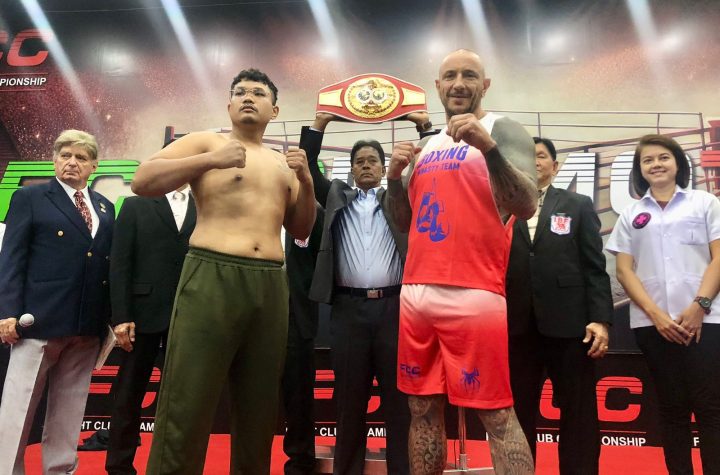
MMAfighting.com
Injured and down two rounds to perhaps the most dangerous third-round fighter in MMA, Robert Whittaker looked to be in major trouble as he came out of his corner to start the third against Yoel Romero at UFC 213. What followed was a master class in crisis management, with Whittaker dominating Romero over the final 15 minutes of the bout based on movement, guts, aggression and conditioning. The result left Romero to wonder what could have been. He only had to win one of the last three rounds and failed to do so.
Less than a year later, he gets a do-over — sort of. Thanks to the unsettled nature of the UFC middleweight division, Whittaker and Romero will rematch in the main event of UFC 225, however without the Aussie’s middleweight belt on the line due to Romero’s weigh-in miss.
Because of the fractured nature of their first fight, it’s fair to examine it as two different halves. In the first, Romero was active and unpredictable; in the second, Whittaker seized control with volume, pacing and distance control. It’s important to note, however, that the first half of the fight directly created the second. While Romero won the first two frames, much of what he did was in response to Whittaker’s unrelenting feints, approaches and attacks. While he matched Whittaker’s output early, he could not do so over the long haul, allowing Whittaker to take the fight over.
As previously mentioned, Whittaker (19-4) did this while injured, having re-aggravated a left knee ligament strain in the first round. Since then he also went through a staph infection and chickenpox. Those setbacks have resulted in an 11-month layoff, but assuming he is fully healed, he should be even better this time around. Still only 27 years old, the middleweight champion has room to grow before hitting his athletic peak.
Whittaker features a nice blend of craftiness, speed, and power that makes him a challenging opponent to face. He comes into fights well prepared, has a strong mastery of fundamental techniques, and adds wrinkles based on opponent and situation. A good example of the last of those traits came against Romero. Generally, Whittaker is a fighter who leans heavily on the jab. However, as soon as one of Romero’s low kicks damaged his leg, he abandoned the jab to avoid possible further damage. Instead, he chose to employ the frequent use of push kicks and front kicks, a brilliant tactical decision that served to stifle several of Romero’s advances as well as to build danger into approaches.
Of course, that alone couldn’t win him the fight. In watching the matchup between them, it was clear that Whittaker had a significant speed advantage against Romero that he was able to capitalize on. Whittaker is very light on his feet. He bounces around the cage, threatening to wade into striking range before doing so in rapid fashion. His strikes are short and crisp, and when he throws combinations, he often punctuates them with either a head kick or a left hook, the latter of which is his favored power strike. Unlike many fighters who get caught up headhunting their opponents, Whittaker will hit the best available target. Against Romero, for instance, he landed 28 times to the body and legs, and 46 times to the head.
While Whittaker went with a kick-heavy offense that was mostly defensive in nature, he complemented that strategy by coming forward to intercept Romero’s attacks and beat him to the punch (or kick).
That strategy took both courage and confidence. Romero is a powerful fighter who has turned around hopeless causes on several occasions with a well-timed strike. Yet Whittaker was able to out-execute him repeatedly over the last few rounds, cutting him off and getting his strikes off first.
Whittaker also did an outstanding job in the wrestling department. Romero is one of the most decorated wrestlers in UFC history, yet Whittaker surrendered only four takedowns in 18 tries, per FightMetric. Just as impressively, when Romero did take the fight to the ground, Whittaker neutralized him. In the second round, Romero had top position for over 70 seconds straight, but landed almost nothing of consequence as Whittaker tied him up with grapevines before he could escape.
Whittaker did all this in the final three rounds with no room for error, but the fight only reached that point by Romero (13-2) taking an early lead.
Romero’s established history has served him well during the course of his career. His dangerous reputation precedes him, and often results in opponents slowing their offense out of an abundance of caution. In turn, that leads to a pace that is more to his liking. Romero is not a sprinter; he prefers to fight in bursts. There are times he will do almost nothing for stretches of 20, 30, even 40 seconds, only to explode into a sudden flying knee or head kick. That ability to lull opponents into complacency has factored into many of his fights, but Whittaker would not let him get away with it last July, and it will be up to Romero to adjust this time around.
In their first fight, Romero’s top weapon was his side kick. It’s what led to Whittaker’s injury and he continued utilizing it throughout the bout, landing 16 leg kicks.
Romero’s wrestling is undoubtedly one of his strong suits, but as most wrestlers will tell you, the grind gets taxing when you fail to accomplish your takedowns. Remarkably, Romero has struggled with his attempts in his MMA career, completing a lowly 32 percent of his tries, per FightMetric. On the other hand, he’s landed a lofty 52 percent of his strikes. For someone with his background, those results seem counter-intuitive. But it’s only because of his opponents’ respect for his wrestling that the striking lanes are open.
Now that Whittaker knows he can stop the shot, Romero’s attacks become that much more difficult. While he has a good understanding of changing his striking rhythms and entry angles, Whittaker has experienced that as well, leaving Romero with even more adjustments to make.
In rematches, the onus is on the loser to make changes. At 41, Romero may have adjustments to make, but may lack the gas tank to implement them. It’s already proven he can’t match Whittaker’s pace, output, and movement over the long haul, so he will likely need a finish to get it done.
While Romero’s power and unpredictability brings omnipresent danger, Whittaker is younger, faster, and more complete, and the rematch should be even more decisive than the first time around. If Whittaker doesn’t close out the show late, he’ll take a clear-cut unanimous decision to solidify his place at the top of the division.





More News
IBF Asia Heavyweight Title Fight: Bisutti vs. Nattapong
Liu Gang, Brico Santig Join Forces
Highland’s Double Impact: August 18 at Lumpinee